Tanzanian social media users post evidence of alleged election rigging amidst internet disruptions
Tanzanians used VPNs to upload footage
Tanzanian social media users post evidence of alleged election rigging amidst internet disruptions
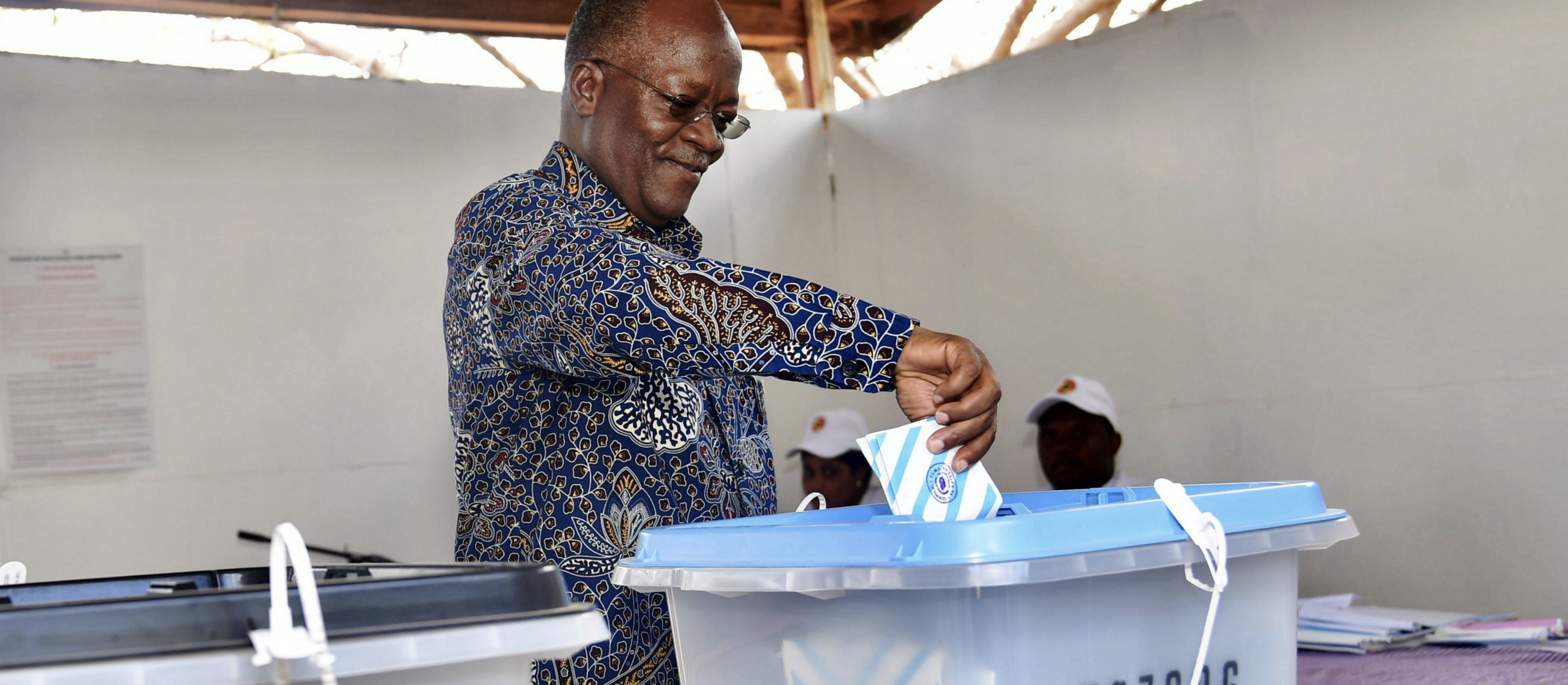
Tanzanians used VPNs to upload footage of potential ballot stuffing and mysterious soldiers dressed in black
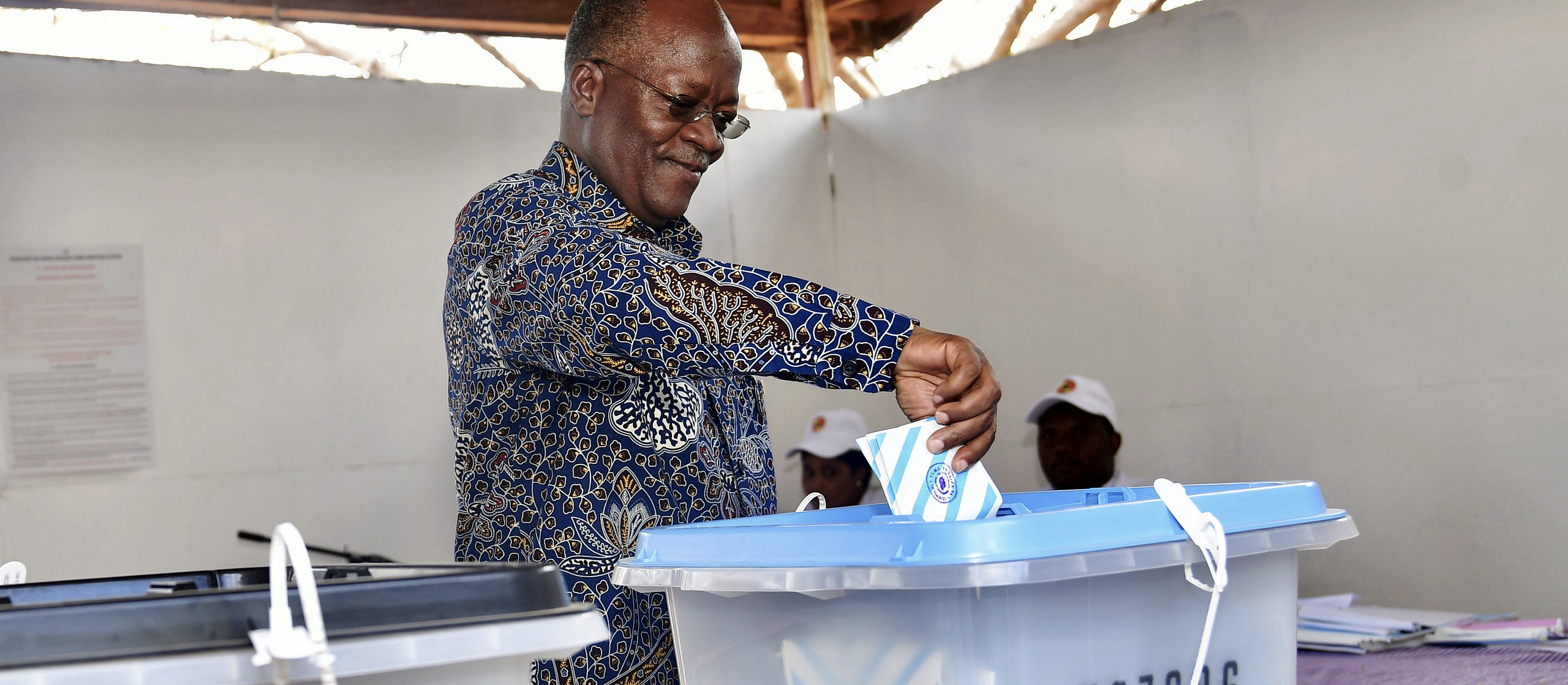
On October 28, 2020, Tanzanian citizens voted in presidential and parliamentary elections that were marred by allegations of election fraud, ballot stuffing, and intimidation, as well as the arrest of opposition party members. Throughout election day, citizens struggled to get information about the state of the country, as telecommunication and internet access were throttled.
According to Tanzania’s constitution, once the national electoral commission declares a presidential candidate has been duly elected, no court has the authority to investigate the elections. Despite this, opposition leaders stated they did not accept the results of the election, accusing the electoral commission of fraud and demanding a re-election. According to the commission, incumbent President John Magufuli received 84.4 percent of the vote, while his main challenger, opposition candidate Tundu Lissu, received 13 percent.
Although images of alleged ballot stuffing and allegations of election tampering circulated online, the electoral commission claimed all counted votes were legitimate and denied allegations of election fraud and the large-scale ejection of thousands of election observers from dedicated polling stations. Similar allegations of vote-rigging were made following the country’s previous presidential election in 2015.
Tanzanian police have acknowledged the arrest of dozens of citizens as well as opposition leaders but have denied allegations of military and security forces killing civilians on the semi-autonomous island of Zanzibar.
Internet throttling
Denying citizens access to information is a tried-and-true tactic of repressive governments seeking to sabotage communications channels during elections or periods of civil unrest. The technique was recently observed during presidential elections in Belarus, Burundi and Togo.
The Tanzania Communication Regulatory Authority suspended bulk SMS services ahead of the elections, and blocked individual messages that contained election-related keywords. After complaints of internet disruptions cropped up online, the internet monitoring group Netblocks reported widespread disruptions to social media and online communications platforms on October 27, the eve of the elections. Twitter subsequently confirmed access to the social media site from inside the country was being blocked or throttled.
Confirmed: Widespread disruption to social media registered across #Tanzania on eve of elections; high impact to Twitter, WhatsApp, Instagram and Google services on Vodacom, Airtel, Tigo, Halotel and Zantel; incident ongoing 📉 #TanzaniaElections2020
📰 https://t.co/LEIpXAlEhf pic.twitter.com/2WRsPSZ2VU
— NetBlocks (@netblocks) October 27, 2020
After allegations of the Tanzanian military and police using deadly force against citizens in Zanzibar, the hashtag #ZanzibarLivesMatter started trending on Tanzanian Twitter. The hashtag’s popularity peaked late in the evening of October 26, the day Zanzibar opposition groups claimed the Tanzanian government killed and injured civilians. While the hashtag lost momentum overnight, it picked up again on the morning of October 27, only to die out late in the day as confirmation of internet disruptions came in.
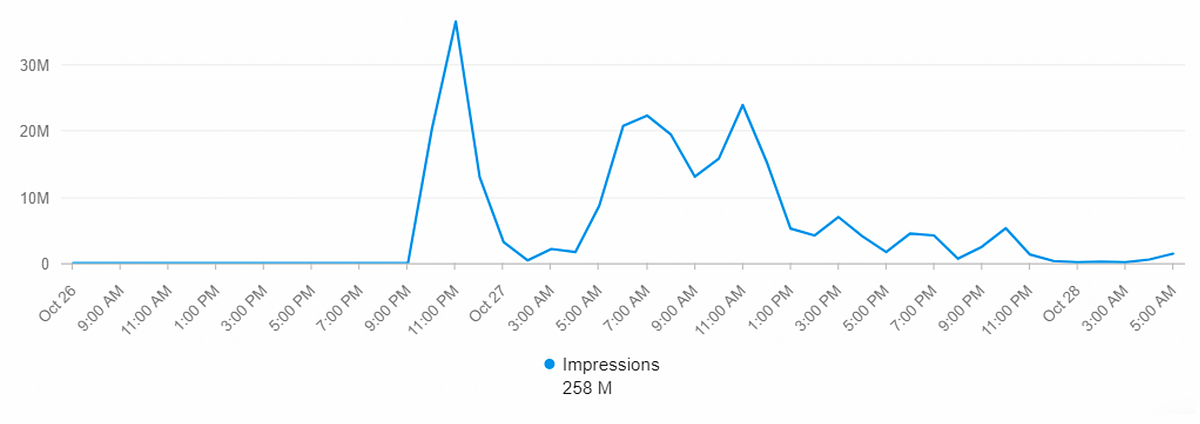
Tanzania’s Electronic and Postal Communications (Online Content) Regulations of 2020, which came into force three months before the election, expanded the country’s list of prohibited content, increased censorship and compromising citizens’ right to online privacy. The regulation prohibits the use of tools that allow citizens to access banned content, effectively prohibiting the use of virtual private networks (VPNs). Despite this, social media users from within the country continued to use VPNs throughout the election period to post evidence of election fraud.
Alleged ballot stuffing
Identifying whether an image of a marked ballot was pre-marked or had been used as a legitimate ballot paper was not possible to determine. However, numerous posts on social media included images of marked ballots, claiming them to be false.
One post by Zitto MwamiRuyagwa Kabwe (@zittokabwe), party leader of the ACT Wazalendo, included an image of a ballot from the Kigoma region of Tanzania. It included a list of political candidates, with a hand-drawn tick selecting Kilumbe Shabeni Ng’enda from the CCM. Cross-referencing the candidates on the ballot paper with the list of candidates registered by the National Electoral Commission of Tanzania confirmed that the names on the ballot were political candidates running for office in Kigoma.

In a tweet posted the day after the election, opposition presidential candidate Tundu Lissu called for “mass democratic action in retaliation” to what he called “shameless election fraud.” The tweet included a video of Tanzanian citizens holding ballot papers. The citizens allegedly confiscated 10 boxes of ballots pre-marked in favor of CCM, and asked police for assistance. While the video is not high enough quality to determine the exact candidate information on the ballot papers, the recording does contain images of ballots that appear to have the same seal present in images of President Magufuli casting his vote. The images also have “2020” written on their front page, indicating they are likely legitimate ballots from the recent elections.
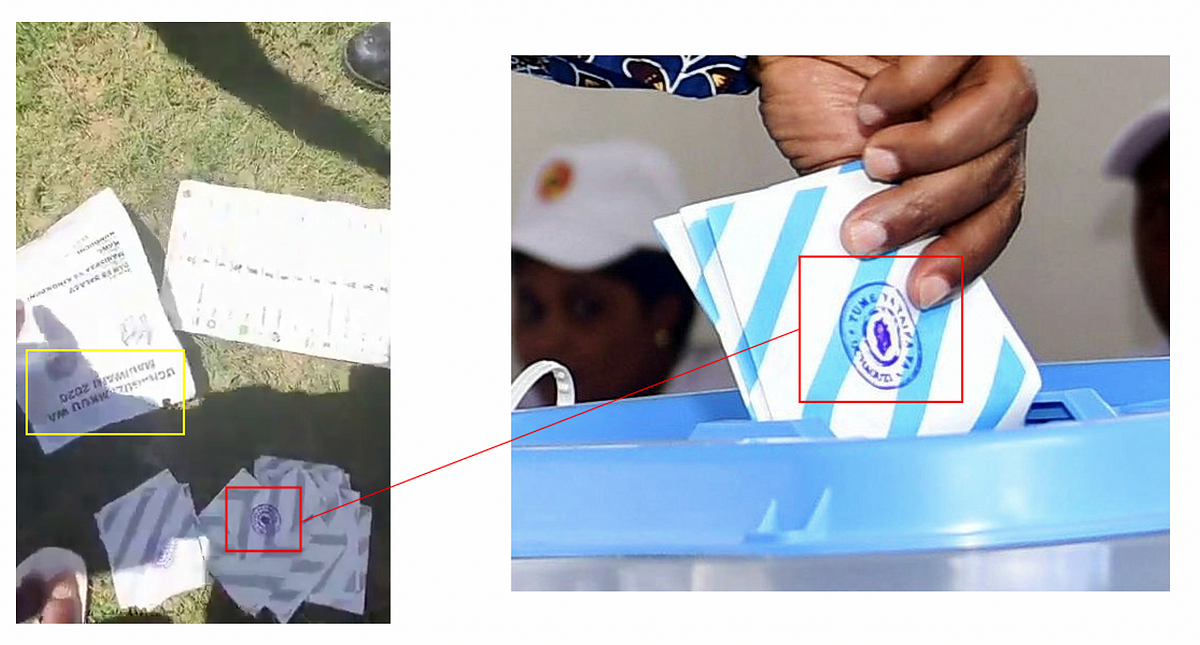
In another video, posted by a Twitter account associated with Lissu’s CHADEMA party, police officers can be seen talking with civilians. The officers, apparently trying to placate the angry citizens, told the crowd that the bag of ballot papers they were holding were “not legitimate” in Kiswahili. One of the officers also says, “these are faulty votes now.”
Mwananchi Mmoja anasikika akisema Tunaharibu Nchi yetu Mara Baada ya Kukamata Kura Feki zikiwa zimepigwa tayari technologia inatusaidia Kujua Ukweli wa matukio ya wizi wa kura pic.twitter.com/6zhOY7nlMD
— Chadema Kanda ya Serengeti (@ChademaSerenget) October 30, 2020
Although some of the officer’s statements are inaudible, at one point a one of them makes reference to a similar incident that happened earlier in the day, during which people were arrested and taken to the police station. “Even those in the morning were like this,” can be clearly heard over the crowd, in reference to ballot papers.
From this incident, it appeared that fraudulent ballots were discovered by police and individuals were arrested over the incident. This is contrary to the electoral commission’s statement that the commission had found no evidence of election fraud during the 2020 election.
Burundian soldiers in Tanzania?
Fichua Tanzania, an organization that documents and exposed human rights abuses in the country, posted a video of armed forces allegedly from Burundi beating civilians in Zanzibar with what appears to be police cars in the background. The video had nearly 75,000 views. Reverse image searches of screenshots from the clip did not return any information on the video itself.
A closer look at a screenshot from the 11-second video clip reveals armed personnel in two different uniforms — camouflage, and all black.
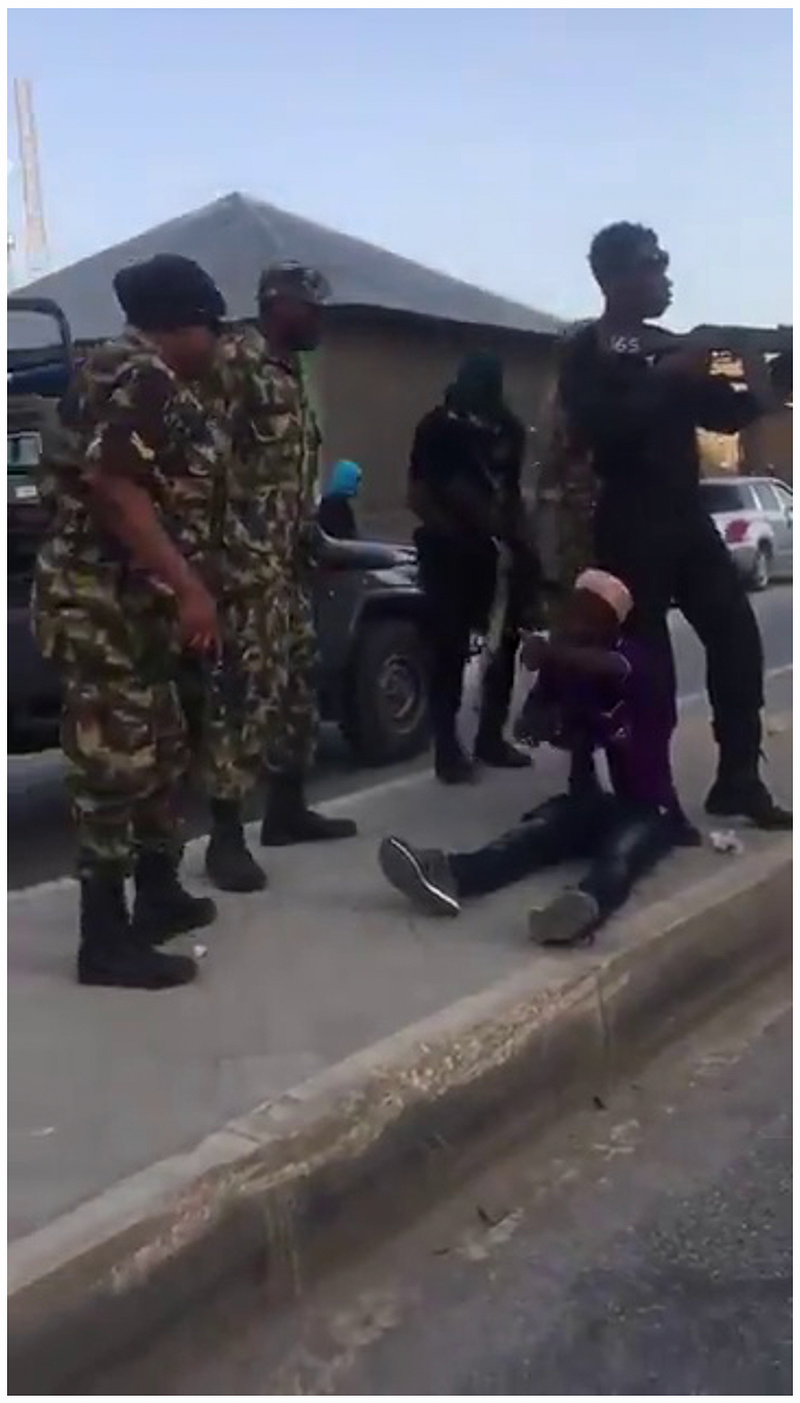
The Tanzanian People’s Defense Force (TPDF), Tanzania’s armed services, use a camouflage style called Disruptive Pattern Material (DPM), a pattern that was previously used by the British Armed Forces and former British colonies.
Although the video is low-quality, the uniform pattern of the soldiers wearing camouflage does appear to be DPM. In an interview with the DFRLab, African Defense Review director John Stupart explained, “(t)he camouflaged individuals in this video are wearing a form of DPM-pattern uniform, which is typical of regular, non-Special Forces soldiers of the Tanzanian military (TPDF).” Burundi, on the other hand, does not utilize DPM-pattern uniforms, instead relying on a number of different camouflage patterns to outfit their soldiers.
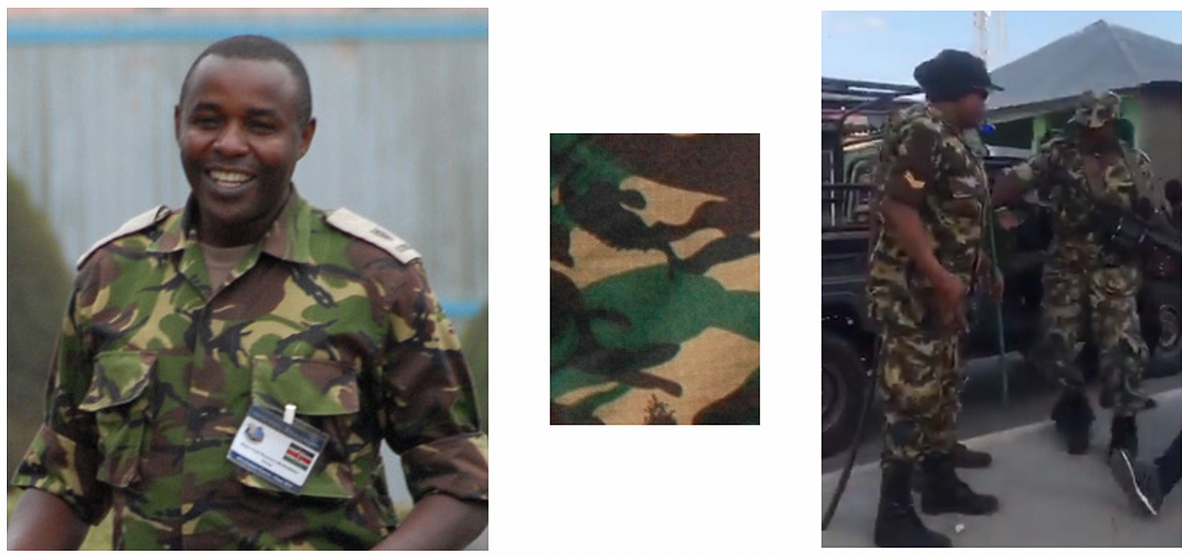
Meanwhile, one of the camouflaged individuals has their rank displayed on their right shoulder. The yellow double chevron is displayed over a strip of brown fabric. The DFRLab was able to find evidence of TPDF soldiers wearing their rank on their sleeve, however the chevrons were silver and attached directly to the uniform, or silver attached to a green cloth. In other instances, soldiers wore red patches over white cloth. Although the video quality is not high enough to be completely certain, it does appear as if only one of the uniformed soldiers have this anomalous rank display.
The personnel in black uniforms in the video are less easily identifiable, however. According to Stupart, “[T]he use of a multi-barreled grenade launcher and the manner in which several carry their weapons — exercising trigger discipline, for example — indicates some level of firearms training, likely either police or military.”
In another tweet by the Twitter account Mdemokrasia Maendeleo, armed personnel in black uniforms can be seen walking alongside slow-moving vehicles. The text of the tweet stated that the men were soldiers from Burundi, however the conversation heard in the background of the video claimed the soldiers were from Rwanda. As is the case with Burundian and Tanzanian soldiers, Rwandan soldiers do not normally wear all-black uniforms.
A clip showing the Millitia from Burundi,who are accussed of brutual killings in Zanzibar,equiped with firearm and local weapons,On the streets Patrol in Wete. pic.twitter.com/o7lXSZ5I5r
— Mdemokrasia Maendeleo. (@mdemokrasia_) October 30, 2020
The video clips themselves are not high enough quality to determine any important information from the black uniforms, despite the markings present on the left breast. However, at least three of the personnel obscured their faces by wearing masks. Two of the masks were cloth balaclavas, covering the whole face, while a third individual wore a Halloween-type mask while carrying what appears to be a garden hoe.
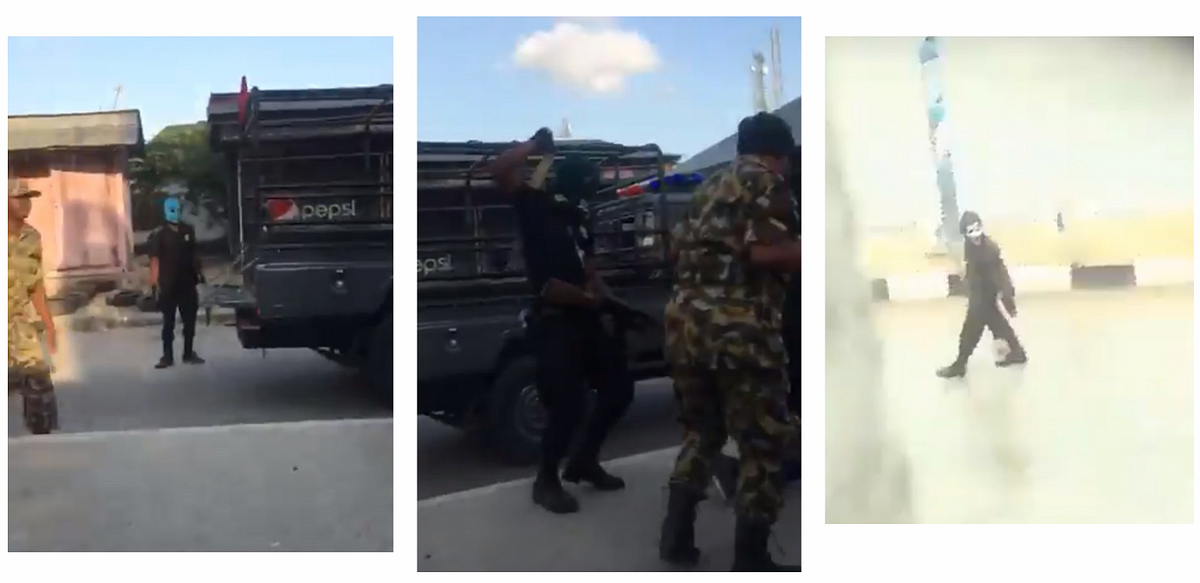
While the armed personnel in black do not appear to be wearing uniforms associated with the Tanzanian or Burundian armed forces, in the first video they appear to be operating alongside TPDF members. The defense force members do not react to a man who is not a part of their unit pointing a weapon at civilians, and one member teams up with man in a black uniform as he hits out at an unidentified man on the floor.
Tessa Knight is a Research Assistant, Southern Africa, with the Digital Forensic Research Lab (@DFRLab).
The DFRLab team in Cape Town works in partnership with Code for Africa.

